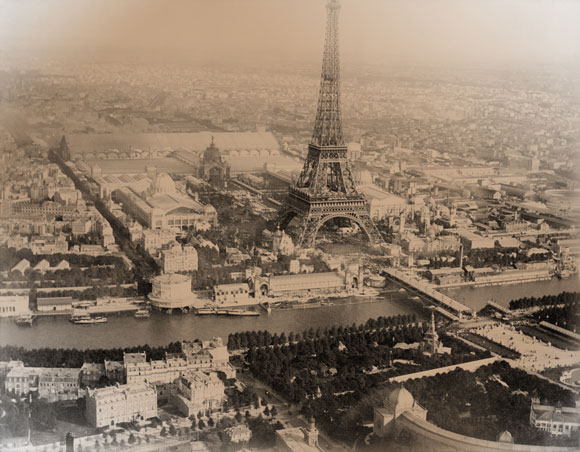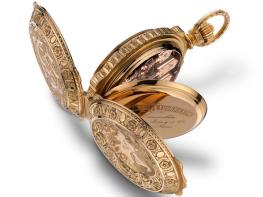Very much in vogue during the second half of the 19th century, ‘universal exhibitions’ were held in major capitals, which had the honour of organising them. The first took place at Crystal Palace in London in 1851. Paris was the scene of a number of such events – including in 1867, 1889 and 1900. For each country that took part, these exhibitions were an opportunity to present their finest achievements in the realm of art, science and industry. Competitions were held in each category and contrary to today, when everyone can announce that they are the best while remaining cautiously in their own corner, nobody was afraid of confronting each other or taking on sometimes insane challenges.
For the firm headed by Gustave Eiffel, the problem that needed solving was simple: to build a tower more than 300 metres or 1,000 foot high. As one might suspect, all notion of simplicity stopped right there. It was the French-Swiss engineer, Maurice Koechlin, who tackled its design. Construction began soon after securing approval for the project from the Minister of Trade in January 1887, and was completed two years, two months and five days later in March 1889. After the end of the exhibition, there was talk of taking the tower down. Fortunately, that never happened, thus enabling it to welcome 240 million visitors to date and to become the world’s most famous monument…

Girard-Perregaux prepared its participation in the 1889 Universal Exhibition with particular care, having already won an award at a previous edition held in Paris in 1867. The watch it would present was naturally its masterpiece, the Tourbillon with three gold bridges in its most complete version with pivoted long detent escapement. An exceptional movement deserved an equally outstanding exterior, and Constant Girard opted for a heavy pink gold case that he had engraved by Fritz Kundert, an artisan based in La Chaux-de-Fonds who was then at the height of his artistic powers. The latter used every technique known at the time (most of which have since been forgotten) to produce an extraordinarily ornate and beautiful decoration.
The verdict came on September 29th 1889, just over 125 years ago: Constant Girard-Perregaux was awarded a gold medal by the Jury of the Paris Universal Exhibition.
But the story does not end there: after the exhibition, the watch was entrusted to famous watch and jewellery retailers, Hauser, Ziwy & Co, who ran stores in Paris and Mexico under the name “La Esmeralda”. It was at this time that it adopted the name under which it still goes today. A short while later, it was bought by General Porfirio Diaz, then president of Mexico.
Nothing more was heard of it until 1970 when, during a journey to Mexico, the co-owner of Girard-Perregaux was contacted by one of the general’s heirs, who offered him the famous watch. The deal was swiftly struck and ever since, La Esmeralda has been part of the collections owned by the Girard-Perregaux Museum of which it is unquestionably the centrepiece.
Today, La Esmeralda remains an enigma as well as an inexhaustible source of inspiration. Why three arrow-shaped bridges? Is there some sort of symbolism behind this? And in terms of inspiration, one need only consider the contemporary Fine Watchmaking collection that belongs to Girard-Perregaux, which has never comprised so many Tourbillons with three gold Bridges as it currently does. It is indeed a truly unique case.

Willy Schweizer is Curator of the Girard-Perregaux Heritage.





